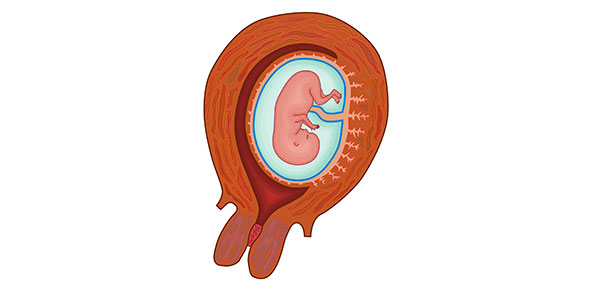Related Flashcards
Related Topics
Cards In This Set
| Front | Back |
|
Which one of the following is
found most consistently in patients diagnosed with irritable bowel syndrome?
A) Passage of blood per rectum
B) Passage of mucus per rectum
C) Abdominal pain
D) Constipation
E) Diarrhea
|
A large review of multiple studies identified abdominal pain as the most consistent feature found in irritable bowel syndrome (IBS), and its absence makes the diagnosis less likely. Of the symptoms listed, passage of blood is least likely with IBS, and passage of mucus, constipation, and diarrhea are less consistent than abdominal pain (SOR A).
|
|
A
26-year-old female presents with a 1-year history of recurring abdominal pain
associated with intermittent diarrhea, 5–7 days per month. Her pain improves
with defecation. There has been no blood in her stool and no weight loss. Laboratory findings are normal, including a CBC, chemistry profile, TSH level,
and antibodies for celiac disease.
Which one of the following
would be most appropriate at this point?A)
Colonoscopy
B) An
upper GI series with small-bowel follow-through
C)
Abdominal CT with contrast
D) A
gluten-free diet
E)
Loperamide (Imodium)
|
This patient has classic symptoms of irritable bowel syndrome (IBS) and meets the Rome criteria by having 3 days per month of abdominal pain for the past 3 months, a change in the frequency of stool, and improvement with defecation. According to current clinical guidelines IBS can be diagnosed by history, physical examination, and routine laboratory testing, as long as there are no warning signs. Warning signs include rectal bleeding, anemia, weight loss, fever, a family history of colon cancer, onset of symptoms after age 50, and a major change in symptoms. Colonoscopy, CT, and GI contrast studies are not indicated. A gluten-free diet would not be indicated since the antibody tests for celiac disease are negative.Antidiarrheal agents such as loperamide are generally safe and effective in the management of diarrheal symptoms in IBS.
|
|
A
42-year-old white female presents to your office as a new patient. She states
that she has an 8-year history of abdominal cramps and diarrhea. Her symptoms
have not responded to the usual
treatments for irritable bowel syndrome. She has no rectal bleeding, anemia,
weight loss,
or
fever, and no family history of colon cancer. Her medical history and a review
of symptoms
is
otherwise negative, and a physical examination is normal.
Which
one of the following would be the most appropriate next step in evaluating this
patient?A) A
CBC
B) A
TSH level
C) A
complete metabolic panel
D)
Serologic testing for celiac sprue
E)
Stool testing for ova and parasites
|
In patients who have symptoms of irritable bowel syndrome (IBS), the differential diagnosis includes celiac sprue, microscopic and collagenous colitis, atypical Crohn’s disease for patients with diarrhea-predominant IBS, and chronic constipation (without pain) for those with constipation-predominant IBS. If there are no warning signs, laboratory testing is warranted only if indicated by the history.
|
|
A 40-year-old male with acute pancreatitis has an
alanine transaminase (ALT) level that is five
times
normal. Which one of the following is the most likely diagnosis?
A)
Gallstone pancreatitis
B)
Pancreatic necrosis
C)
Pancreatic pseudocyst
D)
Hepatitis C
E)
Alcohol-induced pancreatitis
|
In this setting, a threefold or greater elevation of alanine transaminase has a positive predictive value of 95% for acute gallstone pancreatitis. High levels of C-reactive protein are associated with pancreaticnecrosis. Hepatitis C is identified by antibody detection or polymerase chain reaction testing. Othermarkers are investigational.
|
|
In a patient with chronic
hepatitis B, which one of the following findings suggests that the infection is in the active
phase?
A) A normal liver biopsy
B) Detectable levels of HBeAb
C) Detectable levels of HBsAb
D) Elevated levels of ALT
E) Undetectable levels of HBV DNA
|
Chronic hepatitis B develops in a small percentage of adults who fail to recover from an acute infection,in almost all infants infected at birth, and in up to 50% of children infected between the ages of 1 and 5years. Chronic hepatitis B has three major phases: immune-tolerant, immune-active, and inactive-carrier.There usually is a linear transition from one phase to the next, but reactivation from immune-carrier phaseto immune-active phase also can be seen.
Active viral replication occurs during the immune-tolerant phase when there is little or no evidence ofdisease activity, and this can last for many years before progressing to the immune-active phase (evidenced by elevated liver enzymes, indicating liver inflammation, and the presence of HBeAg, indicating high levels of HBV DNA). Most patients with chronic hepatitis B eventually transition to the inactive-carrierphase, which is characterized by the clearance of HBeAg and the development of anti-HBeAg,accompanied by normalization of liver enzymes and greatly reduced levels of hepatitis B virus in thebloodstream. |








